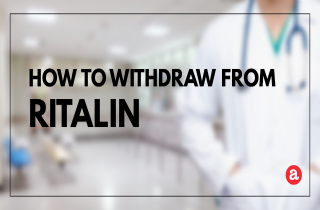When do you withdraw from Ritalin?
Ritalin withdrawal usually begins 24 hour after last use. But Ritalin withdrawal can also occur when you significantly lower your methylphenidate dosing schedule or stop talking Ritalin completely. While withdrawal symptoms from Ritalin can occur anytime you miss a dose of Ritalin, they persist as soon as you commit to stopping Ritalin. More here on Ritalin withdrawal treatment, with a section at the end for your questions about Ritalin withdrawal help.
How long to withdraw from Ritalin?
Ritalin withdrawal duration usually lasts for 3-5 day. But Ritalin withdrawal can be prolonged. Although most symptoms of Ritalin withdrawal syndrome resolve within a couple of weeks after last dose, the intensity and duration of withdrawal from Ritalin addiction depends on the amount and duration of time a person was addicted to Ritalin.
In general, a “crash” period after high-dose, chronic Ritalin use is characterized by symptoms of depression, anxiety, agitation and intense drug craving occurs in the few days after last Ritalin dose. Otherwise, symptoms of Ritalin withdrawal usually last throughout an intermediate withdrawal phase in the first weeks after stopping. During this time, you may experience fatigue, a loss of physical and mental energy, and decreased interest in the surrounding environment. However, Ritalin withdrawal usually resolves around 2-3 weeks after last use, although prolonged drug cravings may persist for weeks to months after cessation.
Can I withdraw from Ritalin at home?
Yes, you can withdraw from Ritalin at home. But you must meet certain criteria in order to be considered for outpatient Ritalin detox. But keep in mind that the Ritalin withdrawal process is always quicker and safer in a medically supervised detox clinic because you can be monitored more closely and treatment can be more finely tuned to your needs. To qualify to withdraw from Ritalin at home you must:
- agree to abstain from using any mood-altering agent, other than those prescribed by the treating physician
- agree to participate in a Ritalin treatment program if Ritalin addiction is present
- arrange to have a sober and responsible family member or friend who will watch for serious signs of withdrawal, assist with medications, and get you to the physician’s office
- be under the age of 65
- have a relatively safe level of tolerance for Ritalin
- HAVE NOT developed seizures, delirium or psychosis during a previous withdrawal
- HAVE NOT been diagnosed with recent head trauma or cerebrovascular accident, acute abdominal pain, jaundice, liver failure, electrolyte imbalance, pneumonia, sepsis, dehydration, AIDS, arrhythmias, angina, ischemic heart disease, hypertension, or severe respiratory disease
- see a physician every day until the risk of withdrawal is minimal
Withdraw from Ritalin symptoms
The main symptoms that you can expect as you withdraw from Ritalin include:
- anxiety
- depression
- drug craving
- hatigue
- hypersomnia (or insomnia)
- increased appetite
- irritability
- muscle aches
- paranoia
- poor concentration
- psychomotor retardation
How to ease withdrawal symptoms from Ritalin
Withdrawal symptoms from stimulants like Ritalin usually do not involve medical danger or intense discomfort. However, a potentially lethal “medical danger” during Ritalin withdrawal is the risk of a profound dysphoria (an intense feeling of discontent with life, depression, negative thoughts and feelings) that may include suicidal ideas or attempts. This is why doctors can prescribed antidepressants during the intermediate or later phases of Ritalin withdrawal. Additional ways to ease withdrawal symptoms from Ritalin include:
- acupuncture to the ear
- anti craving agents
- antidepressants
- bed rest
- drink plenty of fluids
- neuroleptics (if needed for psychotic episodes provoked by high doses of methylphenidate)
How to withdraw from Ritalin safely
You can withdraw from Ritalin safely by first asking your doctor for a tapering schedule for Ritalin. Gradually reducing your dose of methylphenidate over the course of a few weeks can help minimize the severity and intesity of withdrawal symptoms during detox. Additionally, because high risk symptoms of withdrawal occur at high doses of methylphenidate, tapering allows the brain and central nervous system to slowly adjust to reduced doses over time. Check in with your prescribing doctor for a tapering regimen and for additional advice.
The best way to withdraw from Ritalin
The best way to withdraw from Ritalin is always under medical supervision. Whether you seek advice in an outpatient or inpatient setting, the best way to get off Ritalin is with a physician’s help.
How to deal with withdrawal from Ritalin questions
How can you deal with withdrawal from Ritalin? Have you already been through it and have something to pass on to others? Please leave us your experiences, comments, and questions here. We will be happy to respond to your personally or to refer you to someone who can help.









Related Posts